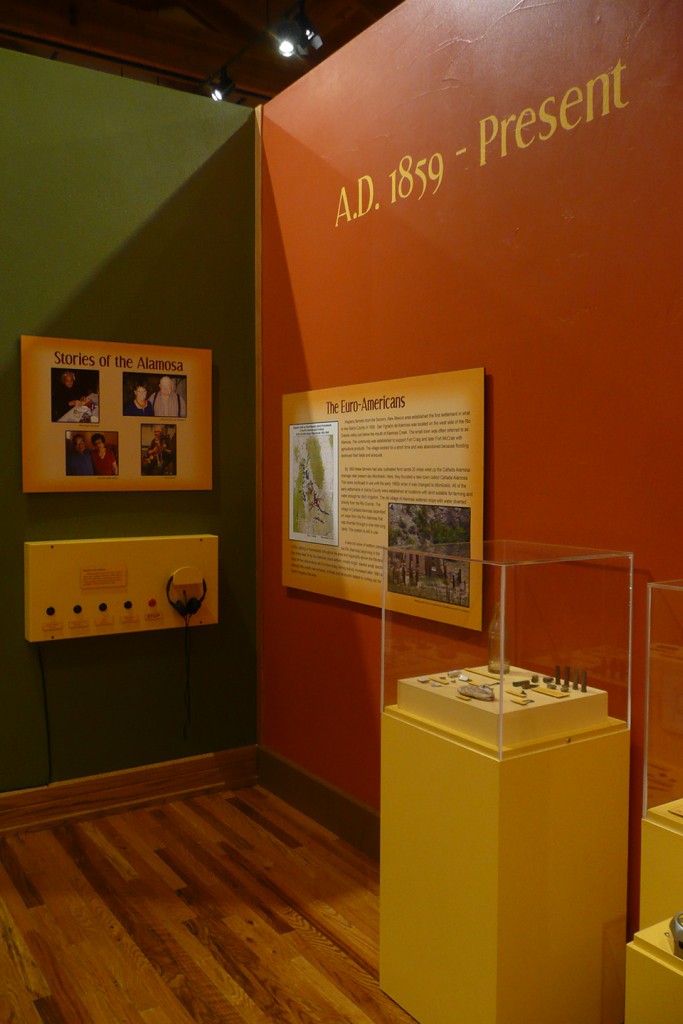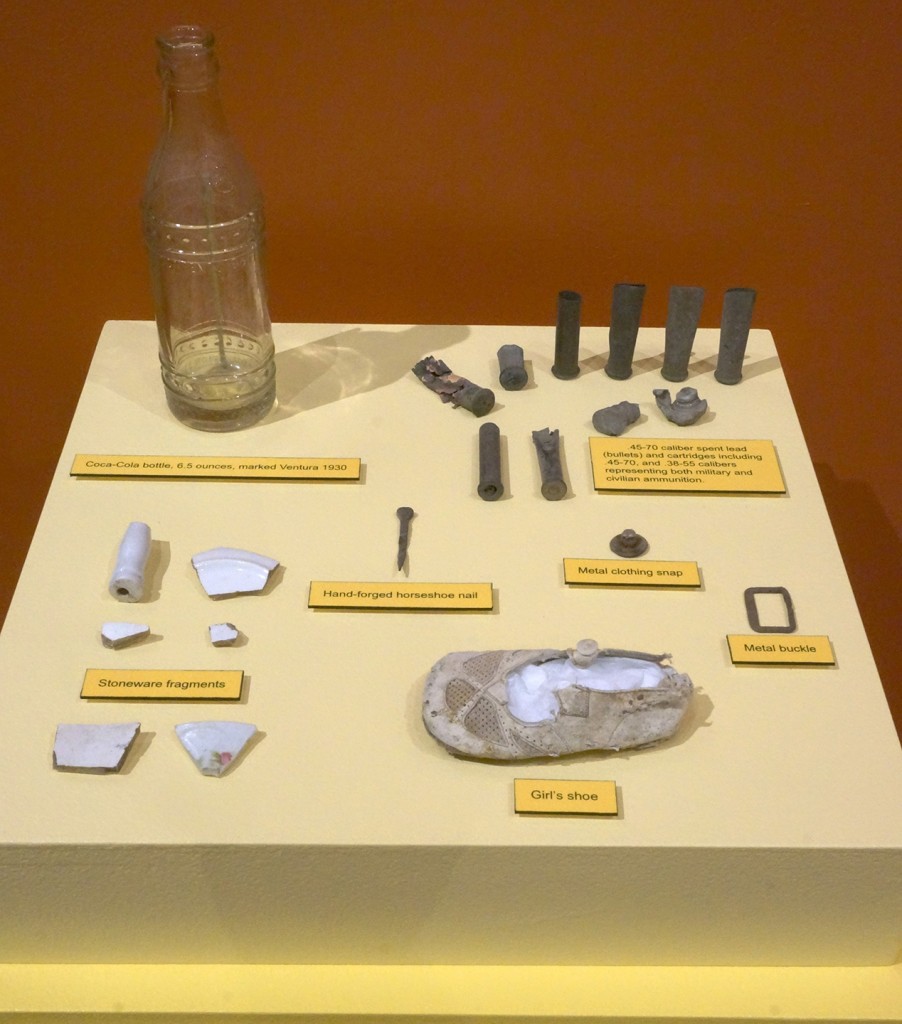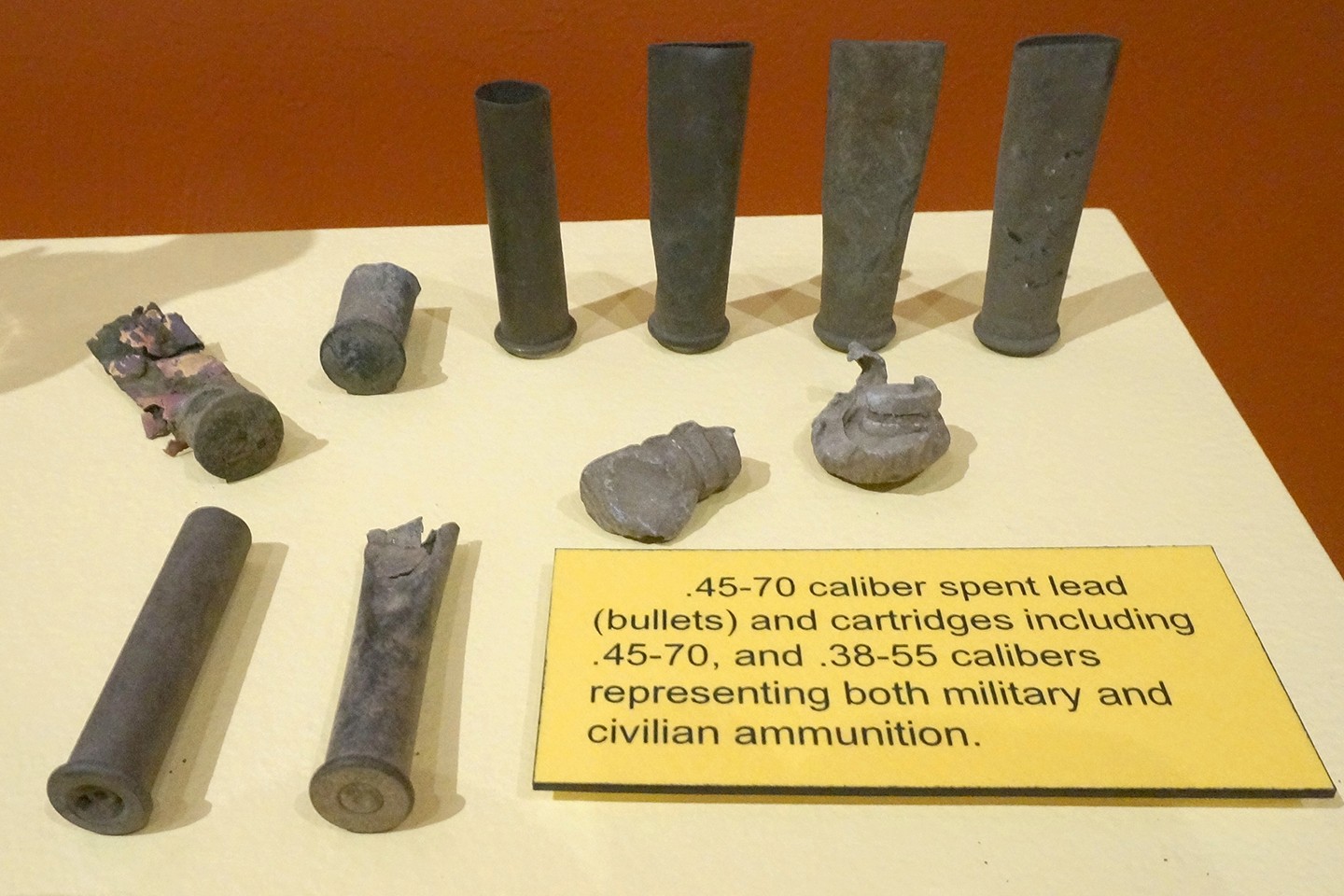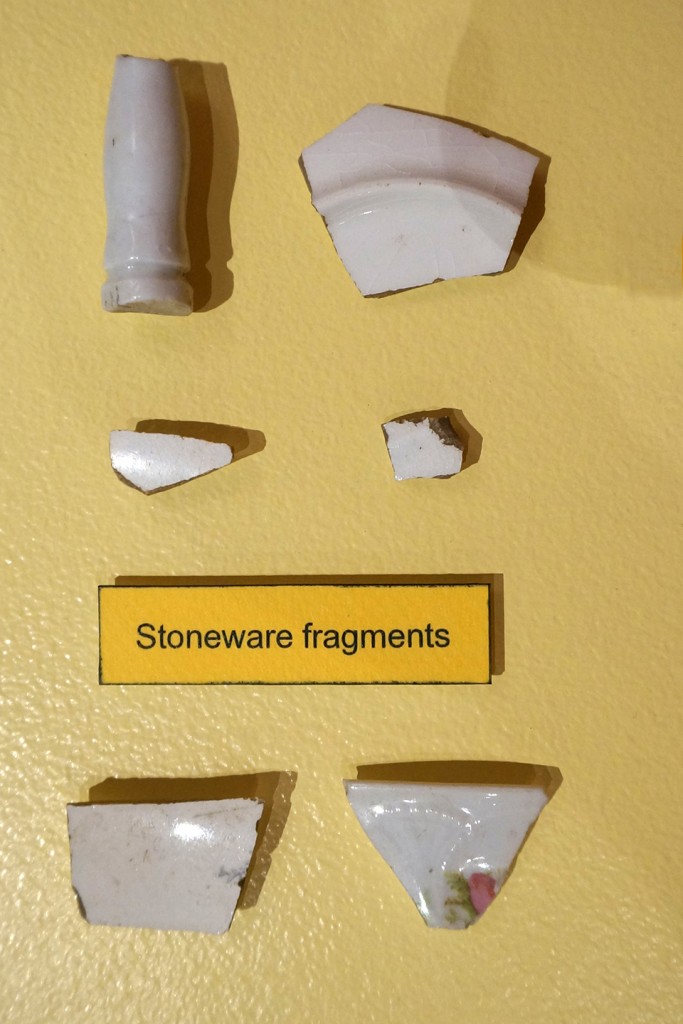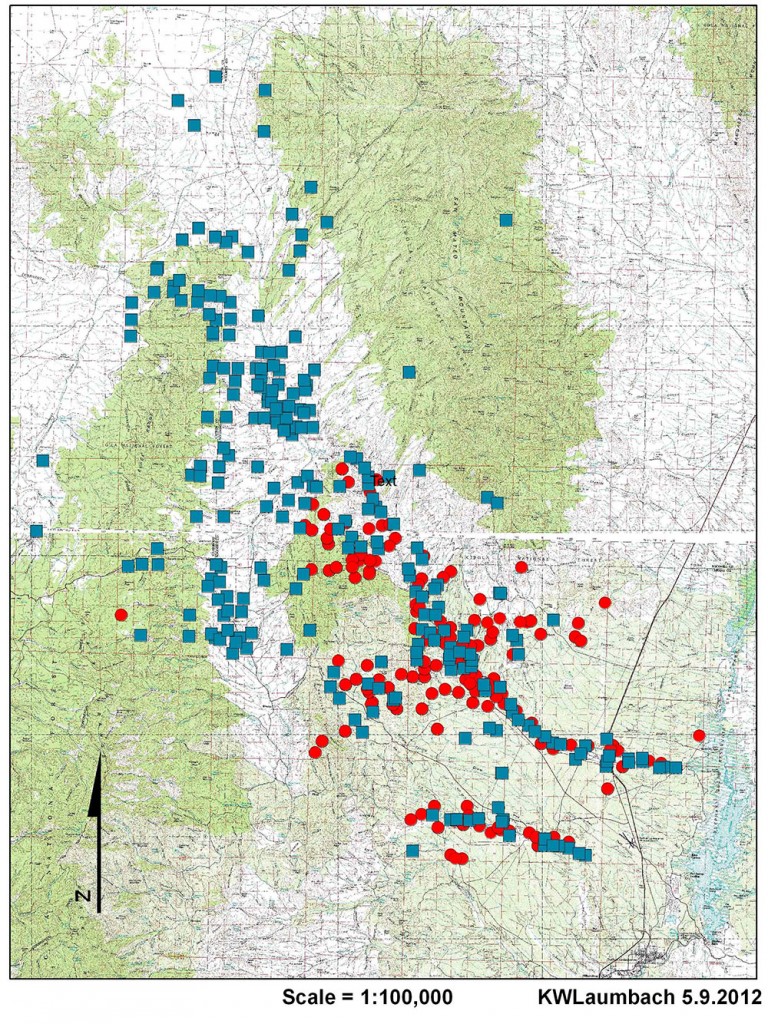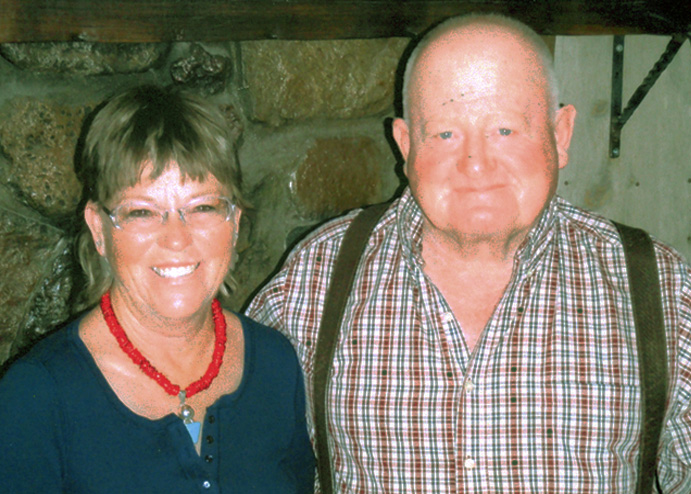The Euro-Americans
Hispanic farmers from the Socorro, New Mexico area established the first settlement in what is now Sierra County in 1859. San Ygnacio de Alamosa was located on the west side of the Rio Grande valley just below the mouth of Alamosa Creek. The small town was often referred to as Alamosa. The community was established to support Fort Craig and later Fort McCrae with agricultural products. The village existed for a short time and was abandoned because flooding destroyed their fields and acequias.
By 1864 these farmers had also cultivated farm lands 20 miles west up the Cañada Alamosa drainage near present day Monticello. Here, they founded a new town called Cañada Alamosa. This name continued in use until the early 1880s when it was changed to Monticello. All of the early settlements in Sierra County were established at locations with land suitable for farming and water enough for ditch irrigation. The old village of Alamosa watered crops with water diverted directly from the Rio Grande. The village of Cañada Alamosa depended on water from the Rio Alamosa that was diverted through a nine mile long canal. This system is still in use.
A second wave of settlers came to the Rio Alamosa beginning in the 1870s. Settling on homesteads throughout the area and especially above the Monticello Box at the head of the Rio Alamosa, these settlers, mostly Anglo, started small ranches. Many of their descendents still live there today. Mining activity increased after 1880 and although little wealth was extracted, artifacts and structures related to mining can be found throughout the area.
Stories of the Alamosa
Twenty-one oral history interviews were completed during the course of the project. Interviews are on file at New Mexico Farm and Ranch Heritage Museum (Las Cruces), the New Mexico State Archives (Santa Fe), Geronimo Springs Museum (Truth or Consequences), Human Systems Research, Inc. (Las Cruces), and the Institute for Historical Survey Foundation (Las Cruces). Copies of interviews can be obtained from the New Mexico Farm and Ranch Heritage Museum.

